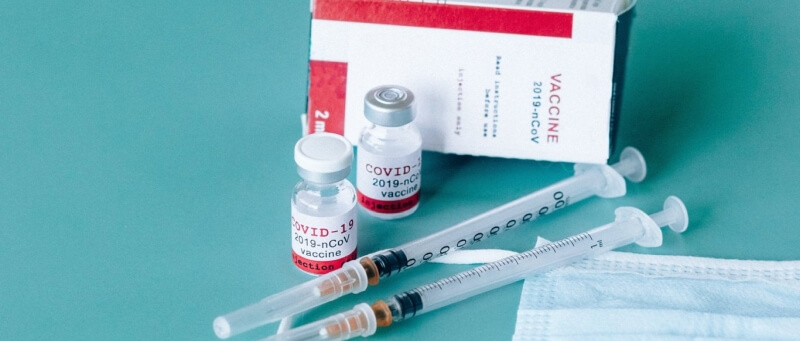
There is a lot of confusion, rumors, and misinformation about the vaccines, which is causing unnecessary fear and in some cases, panic. The following information is to help explain the "Basics" about the types of vaccines;
- How the four primary types of vaccines actually work.
- How many doses are required.
- What other vaccines have been around that use the same technology.
The information is not intended to provide medical recommendations, always consult with a licensed local medical professional as to what vaccine is best for you. The information is only to provide basic information to better help you understand "how" these vaccines work and how they are different from each other.
But first, let’s start with some humor to relieve some of the stress surrounding this subject.
Everyone has heard at least one of the conspiracy theories about the “real” purpose of the vaccines, these can be very entertaining. The most entertaining so far is the one a friend had texted me about a while back.
The text said something like, "Hey I’m not getting the vaccine", I responded, "why not?". The reply is hilarious!
Reply, "because I heard that the vaccines are using nano-technology to inject us with microchips to track us". Yep, that was it.
My response was, "seriously? Do you not realize that you are texting me from that Global Positioning tracking device you are currently holding in your hand, called a cell phone?" The next sound I heard was, "CLICK". Hilarious!
Let’s start with what a "vaccine" is by definition according to the US CDC:
"suspension of live (usually attenuated) or inactivated microorganisms (e.g. bacteria or viruses) or fractions thereof administered to induce immunity and prevent infectious diseases and their sequelae".
Rumor #1: The vaccines provide immunity from the virus. This is false.
While the current medicines being given are called "vaccines", if you read the complete information provided from each of the pharmaceutical manufacturers, they clearly explain, they DO NOT provide immunity from the virus.
These "vaccines" were developed with the intent to reduce the severity of the effects the virus has on the human body in the event of an infection. They do in fact provide a level of protection reducing the possibility of hospitalization and most importantly, death.
What this means: Is after being fully vaccinated you can still get infected from the virus, and you can still transmit the virus, infecting others.
Ok, now that we have that cleared up, let’s get to the information that you really want to know.
What are the primary differences between the most common vaccines being used? Let’s start with:
1. WHOLE VIRUS VACCINE
Vaccines using the method: Sinopharm, Sinovac
Number of doses required: 2 doses given intramuscular
Other vaccines that are licensed and using this type of technology: Rabies, Polio, Hepatitis A.(All inactivated types).
What to know: The whole virus vaccine uses a deactivated or weakened form of the pathogen, that causes the virus to activate a protective immune response upon infection. These inactive forms of the virus cannot infect cells or replicate, they only assist with activating an immune response.
Benefits: According to Experts at GAVI, the technology is well established, relatively simple to manufacture and it is suitable for people with compromised immune systems.
Challenges: Booster shots may be required.
2. RNA or mRNA VACCINE
Vaccines using the method: Pfizer BioNTech, Moderna
Number of doses required: 2 doses given intramuscular
Other vaccines that are licensed and using this type of technology: None
What to know: Since there are no other vaccines currently using this technology, it can be mistaken as a “NEW” technology in the fight against viral infections, it is not new. Studies in the past have used this technology in the fight against, Rabies, Zeka, and Influenza.
There is a considerable amount information available about this technology.
Benefits: According to PHG Foundation of Cambridge University, there is an established safety record since there are no "live" components so there is no possibility the vaccine may active disease. It is a reliable method, and it is relatively simple to manufacture.
Challenges: According to the PHG Foundation, unintended immune reactions could possibly occur. Effective delivery since RNA in the body is quickly broken down. Storage issues. And the fact that this type of vaccine has never been licensed for human use.
3. NON-REPLICATING VIRAL VECTOR
Vaccines using the method: Johnson & Johnson, Oxford-AstraZeneca, Sputnik V
Number of doses required: 2 doses given intramuscular. 1 dose - Johnson & Johnson.
Other vaccines that are licensed and using this type of technology: Ebola
What to know: This vaccine introduces a safe and modified version of the virus referred to as a "the vector". The vector delivers genetic information for the antigen. Spike proteins are on the virus surface, so "the vector" for this type of vaccine is the spike proteins.
Once infected, the body’s cells are directed to produce a considerable numbers of antigens, activating the body’s immune response.
Benefits: According to GAVI, vaccinations that are viral vector-based are well established providing a strong immune response.
Challenges: Past exposure to the specific vector, could reduce the effectiveness of the vaccine. Compared to other vaccines this type of vaccine is relatively complex to manufacture.
4. PROTEIN SUBUNIT
Vaccines using the method: Novavax
Number of doses required: 2 doses given intramuscular.
Other vaccines that are licensed and using this type of technology: Hepatitis B, shingles, pneumococcal & meningococcal diseases.
What to know: This vaccine introduces purified "pieces" of the virus, rather than the whole virus in order to activate an immune response. Restricting the immune system to the whole virus will minimize the possibility of side effects.
Benefits: the SUBUNIT vaccines use well established technology that is beneficial to those that are immunocompromised.
Challenges: this type of vaccine is relatively complex to manufacture, and boosters may be required.




Share on social media